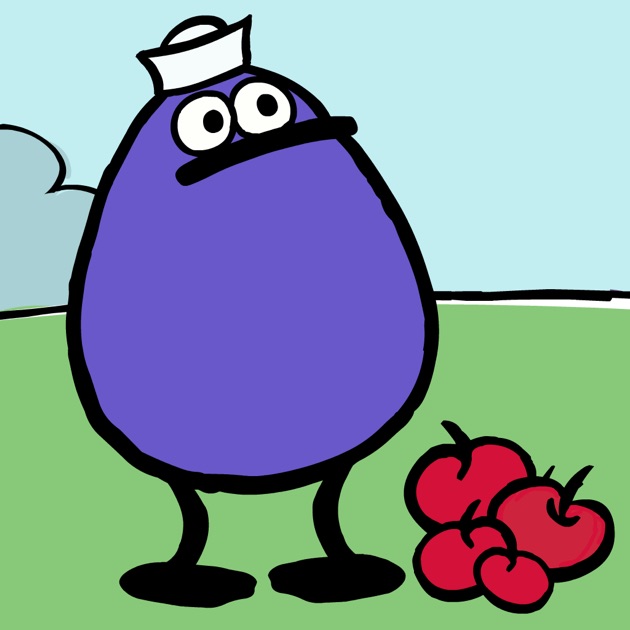
Informed Species: If not for the tiny cockscomb on his head, you probably wouldn't know Peep was a chicken.Quack does this very vaguely when he is waiting to tell the two turtles to go to the sunflowers, since he sees the trees both turtles live under.Peep: Hey! I can see Nellie's house from here! I Can See My House from Here: A variant, when Peep is standing on top of a large, round rock:.In that same episode, Quack complains that Quack 2 is demanding, takes up a lot of space, and sneezes on others.while he's doing exactly the same thing with Peep and Chirp.Hypocritical Humor: In the episode with Quack 2, she insults Quack's way of walking and says that only "squinks" walk like that, but when she shows off her walk to show that it's different it's EXACTLY like Quack's.Hoist by His Own Petard: Tom, in his debut episode, hand in hand with Cat Up a Tree.Help, I'm Stuck!: One entire episode, "Stuck Duck", focused around this trope, with Quack getting stuck in a log and the cast trying everything to try and get him out.Since none of them have hands, they pull it off by nuzzling. Group Hug: Pops in from time to time between Quack, Peep, and Chirp.Giant Flyer: Hoot the owl, who fits the criteria of normal sized flyers, large flying predators and deus ex machina airlines all at the same time.It's all but stated that this is why Quack loves this particular game. All Quack has to do to win follow the leader is jump in the water, since most of his friends (except for Frog and Beaver Boy) can't swim. He was originally written as male, but when the original short was remade in 1988 he was referred to with female pronouns. Gender Flip: In the original short film, Chirp was male.Feather Fingers: Played straight with Chirp, one of the few with visible wings that she sometimes uses but she uses them mostly to gesticulate.Ducks can't walk on water, despite what you may have heard. Afterwards, there is always a 2-minute live-action segment with real kids exploring and demonstrating the topic that Peep and his friends learned about in the episode.

But, there are many recurring plotlines, including Chirp trying to learn how to fly, Quack and his singing, or Peep and Chirp trying to get to Green Island in the nearby pond.


However, things are made ever more difficult (read: hilarious) for the little birds by their simple naivety and ignorance of how things work due to being, well, babies. Most episodes involve the three newborn birds learning something new about the world around them and solving some problem or having some adventure related to it. The show is narrated by Joan Cusack and follows three main characters, who are a baby chicken named Peep and his friends, a blue duckling named Quack and a red robin named Chirp. Seeking to teach math, nature and basic science concepts to young children, the show was a co-production between PBS affiliate WGBH Boston and 9 Story Media Group, in association with TVOntario and Discovery Kids. Produced by WGBH-Boston and 9 Story Entertainment, in association with TVOntario and Discovery Kids, "PEEP and the Big Wide World" is based on the original artwork of Oscar-nominated, Danish animator Kai Pindal and has a theme song performed by Blues legend Taj Mahal.Peep and the Big Wide World is a Canadian animated series created by Danish-Canadian animator Kaj Pindal and based on a series of National Film Board of Canada shorts he made, which were narrated by Peter Ustinov. The program also has an accompanying Web site ( ) so that kids and their parents can keep experimenting long after the television is turned off. Young viewers follow a baby chicken named Peep, a robin named Chirp and a duck named Quack as the cartoon friends investigate mysterious animal tracks, discover shadows, learn the truths of gravity and otherwise explore their world. "PEEP and the Big Wide World," an animated series that gives wings to the innovative idea of teaching science to preschoolers, is the newest addition to The Learning Channel's and Discovery Kids' commercial-free and sponsor-free programming block, "Ready Set Learn!" Actress Joan Cusack narrates the show, which breaks new ground by teaching toddlers basic science concepts and skills like measuring, comparing and estimating. Radio shows, Web-based resources, community programs, life-long learning opportunities Innovative programs for children and adults, and science information material for broadcasters Permanent, regional and traveling exhibits and associated outreach programs IMAX films and other film projects for diverse audiences

NSF supports a wide variety of educational and informational projects for the general public


 0 kommentar(er)
0 kommentar(er)
